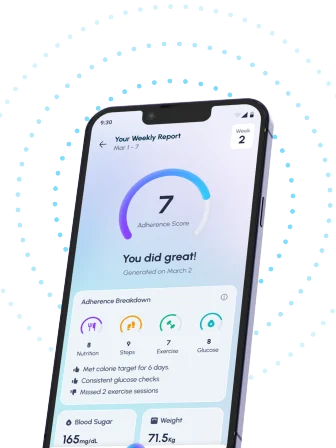Diabetes is a condition that affects millions of people worldwide. As the disease continues to rise, many people are looking for natural ways to manage their blood sugar levels. One such remedy that has gained popularity is garlic. But is garlic good for diabetes? Can it really help control blood sugar levels? In this article, we’ll explore the potential benefits of garlic for diabetes, backed by research and expert opinions, and offer practical tips for incorporating garlic into your diet.
What is Diabetes and Why Is Blood Sugar Control Important?
Before diving into the potential benefits of garlic, it’s important to understand diabetes and the significance of controlling blood sugar.
Diabetes is a chronic condition that occurs when your body either cannot produce enough insulin (a hormone that regulates blood sugar) or when your body’s cells become resistant to insulin. This leads to high blood sugar levels, which can damage organs and tissues over time.
There are two main types of diabetes:
- Type 1 Diabetes: This type is an autoimmune disease where the body attacks insulin-producing cells in the pancreas. It is typically diagnosed in childhood or early adulthood.
- Type 2 Diabetes: This is the more common form, where the body either doesn’t produce enough insulin or the cells become resistant to insulin. It is often linked to lifestyle factors like diet and physical activity.
Regardless of the type, controlling blood sugar levels is crucial to preventing complications like heart disease, kidney failure, and nerve damage.
How Garlic Affects Blood Sugar Levels
Garlic has been used for thousands of years for both culinary and medicinal purposes. It is well known for its ability to add flavor to dishes, but recent research suggests that garlic may also help manage blood sugar levels, making it a potentially useful tool for people with diabetes.
Garlic Contains Compounds that May Help Lower Blood Sugar
Garlic is rich in bioactive compounds such as allicin, sulfur compounds, and flavonoids, all of which may contribute to its health benefits. Specifically, allicin, the compound responsible for garlic’s distinctive smell, has been found to have various health benefits, including improving insulin sensitivity and reducing blood sugar levels.
- Allicin: Research has shown that allicin can help lower blood sugar by improving the function of insulin. This may make the body more efficient at using insulin and help reduce blood glucose levels.
- Sulfur Compounds: These compounds, which are abundant in garlic, may also help in regulating blood sugar. They have anti-inflammatory effects that can help reduce insulin resistance.
Garlic May Improve Insulin Sensitivity
One of the major issues in type 2 diabetes is insulin resistance, where the body’s cells do not respond effectively to insulin. Garlic has been shown to improve insulin sensitivity, which means the cells can better utilize insulin to lower blood sugar.
A study published in the Journal of Nutrition found that garlic supplementation improved insulin sensitivity in individuals with type 2 diabetes. This could help prevent the need for increasing doses of insulin or medication, especially in the early stages of diabetes.
Garlic May Help with Other Health Concerns Related to Diabetes
In addition to lowering blood sugar, garlic may also help address other issues commonly faced by people with diabetes. These include high blood pressure, high cholesterol, and inflammation—all of which can contribute to the complications of diabetes.
- High Blood Pressure: Garlic has been shown to have mild blood-pressure-lowering effects. This is important because people with diabetes are at an increased risk of developing high blood pressure, which can lead to heart disease and kidney damage.
- Cholesterol Levels: Garlic may also help lower LDL (bad) cholesterol while increasing HDL (good) cholesterol. Managing cholesterol is vital for people with diabetes to reduce their risk of heart disease.
- Anti-Inflammatory Effects: Chronic inflammation is common in people with diabetes, and garlic’s anti-inflammatory properties may help reduce this, promoting overall health.
What Does the Research Say About Garlic and Diabetes?
Numerous studies have explored the impact of garlic on blood sugar levels, and while the results are promising, more research is needed to fully understand its effects. Here’s a summary of key findings from various studies:
- A meta-analysis published in the Journal of Clinical Medicine in 2020 examined multiple studies on garlic and diabetes. The analysis concluded that garlic supplementation led to significant reductions in fasting blood glucose levels and improved insulin sensitivity.
- A randomized controlled trial conducted in 2012 found that garlic supplementation reduced blood glucose levels and HbA1c (a long-term marker of blood sugar levels) in people with type 2 diabetes.
- In a study published in the International Journal of Endocrinology and Metabolism, researchers found that garlic had beneficial effects on blood sugar control and cholesterol levels in people with diabetes.
These studies suggest that garlic may be a helpful addition to the diet of individuals managing diabetes, especially for those looking to lower their blood sugar and improve overall metabolic health.
How to Incorporate Garlic into Your Diet
If you’re considering adding garlic to your diet to help manage diabetes, here are some easy ways to do so:
1. Raw Garlic
One of the best ways to benefit from garlic’s active compounds is by consuming it raw. Crushing or chopping garlic and allowing it to sit for a few minutes before consuming it can enhance the release of allicin.
- Add crushed garlic to salads, dressings, or smoothies.
- Mix crushed garlic into a warm cup of water or tea.
2. Garlic Supplements
If you don’t enjoy the taste of garlic or find it difficult to incorporate it into your meals, garlic supplements are an option. These supplements typically come in the form of garlic powder, capsules, or oils. Look for standardized supplements that contain allicin, the key compound for blood sugar regulation.
3. Cooked Garlic
While cooking garlic can slightly reduce the allicin content, it still retains other beneficial sulfur compounds. Add garlic to stir-fries, soups, or roasted vegetables to enhance flavor and gain health benefits.
- Roast garlic cloves and spread them on whole-grain bread.
- Add chopped garlic to your favorite vegetable or meat dishes.
4. Garlic and Honey
A popular remedy in traditional medicine is mixing crushed garlic with honey. Honey, while high in natural sugars, can have anti-inflammatory properties and may complement garlic’s benefits. Mix one crushed garlic clove with a teaspoon of raw honey and consume it once a day.
Expert Contributions
Dr. Ramesh Kumar, an endocrinologist in Mumbai, explains, “Garlic has been studied for its potential to help control blood sugar levels, and early research suggests it could be a beneficial addition to the diet of people with diabetes. However, it is important to remember that garlic should complement, not replace, prescribed medications or lifestyle changes for managing diabetes.”
FAQ: on Is Garlic Good for Diabetes?
Q1: Can garlic cure diabetes?
No, garlic cannot cure diabetes, but it may help lower blood sugar levels and improve insulin sensitivity when included as part of a healthy diet.
Q2: How much garlic should I eat for diabetes?
There is no official recommendation, but consuming 1-2 cloves of raw garlic per day may provide health benefits. Always consult your doctor before making significant dietary changes.
Q3: Can I take garlic supplements instead of raw garlic?
Yes, garlic supplements are an option for those who don’t like the taste of raw garlic. Look for supplements that contain allicin, which is the active compound responsible for many of garlic’s health benefits.
Q4: Are there any side effects of garlic for diabetes?
Garlic is generally safe for most people, but consuming too much can cause digestive issues like bloating or garlic breath. If you’re on blood-thinning medication or have allergies, consult your healthcare provider before adding garlic to your routine.
Q5: Can garlic help with diabetes complications like high blood pressure?
Yes, garlic has been shown to have mild blood pressure-lowering effects, which is beneficial for people with diabetes who are at a higher risk of developing hypertension.
Conclusion
Garlic may be a simple yet powerful addition to the diet for managing diabetes. While it is not a cure, scientific research suggests that garlic can help regulate blood sugar levels, improve insulin sensitivity, and address other health issues like high blood pressure and cholesterol. Whether consumed raw, cooked, or in supplement form, garlic offers several potential benefits for individuals with diabetes. As always, it’s important to consult with your healthcare provider before making any major changes to your diet, especially if you have a chronic condition like diabetes.



